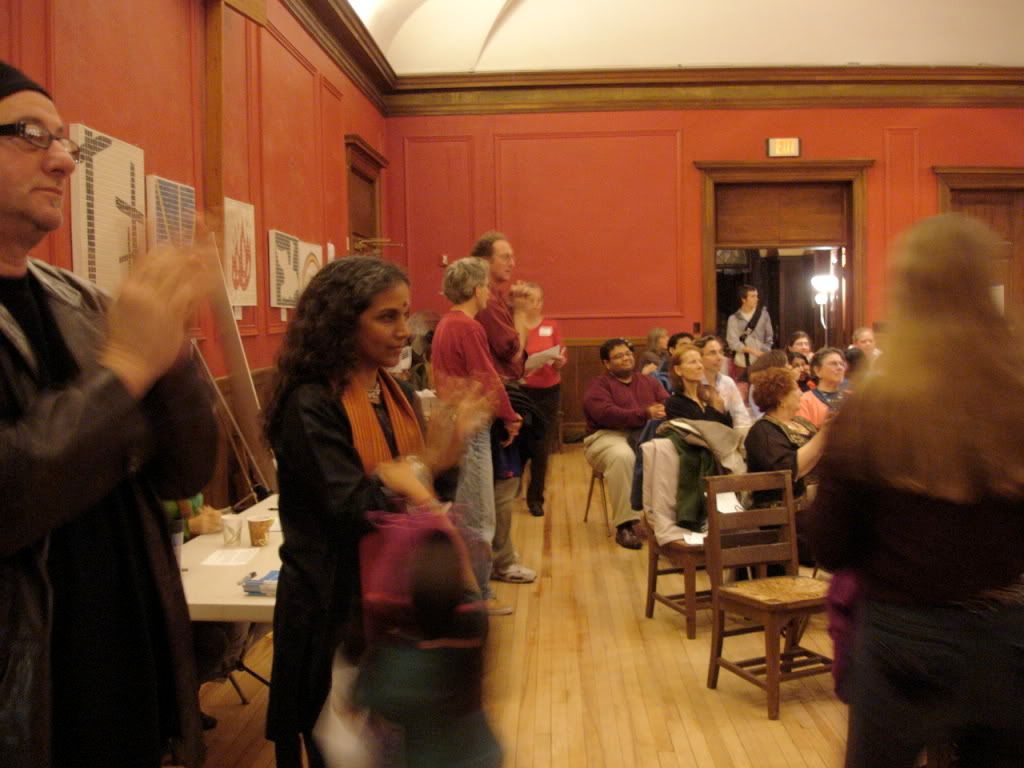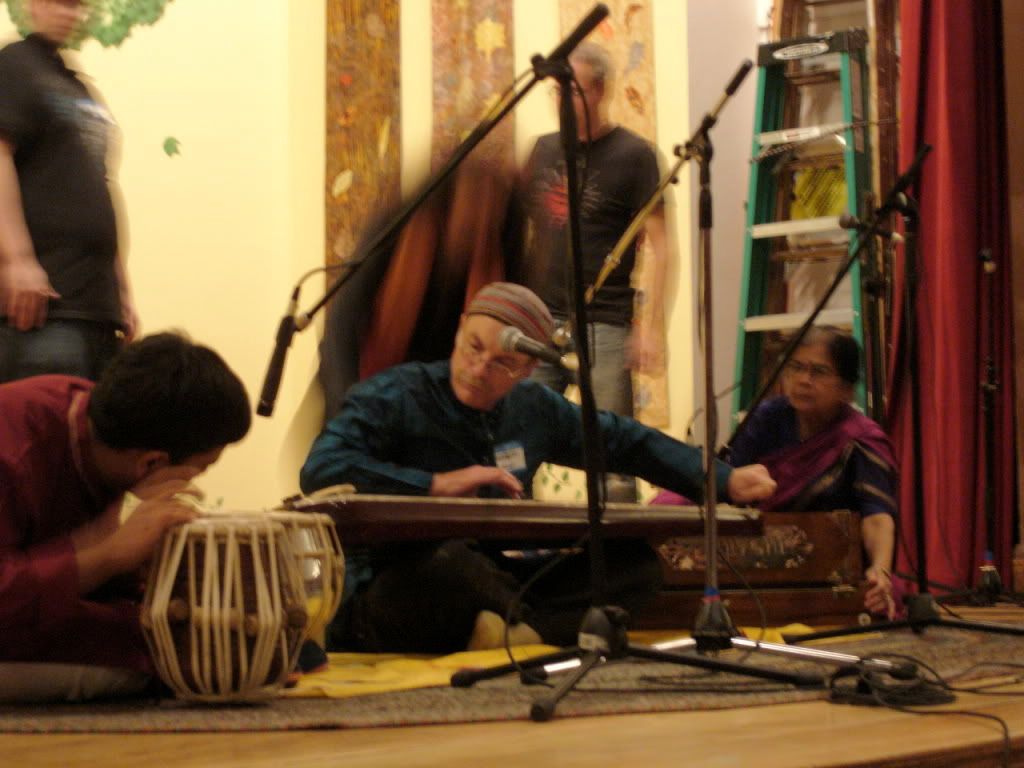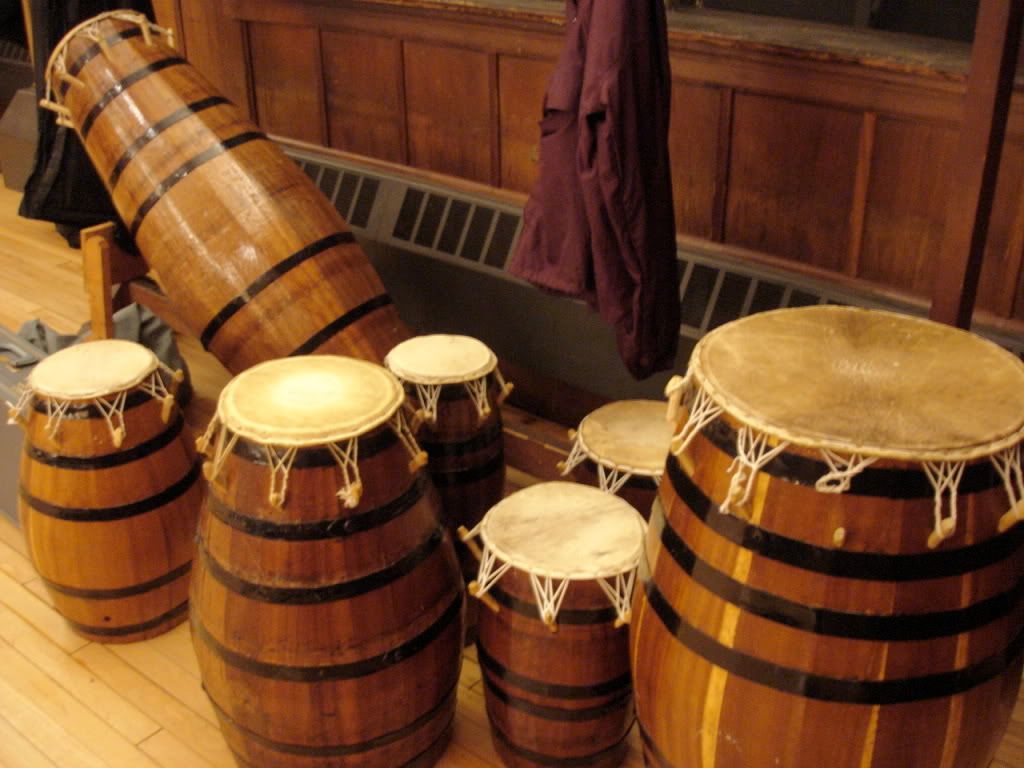music October 24 Action Warren's music: Jose Feliciano Malvina Reynolds singer-songwriter Suzanne Vega Vijaya
by Warren
3 comments
Meta
SiteMeter
Brighter Planet
Playing for the Planet: Vijaya Sundaram
Vijaya Sundaram is a musician of superb abilities. An excellent composer and lyricist, she has a wide repertoire of material from many of the great songwriters. Over the past decade, however, she’s been away from the performance scene, pursuing a career as a teacher in a local public school, and spending a lot of time with our daughter Sharada.
The “Playing for the Planet” concert actually saw her in three separate roles: as vocal accompanist for my set of khyal, as a member of the Agbekor Society, and as the singing and speaking MC of the evening.

environment Indian music music October 24 Action Warren's music: Gorakh Kalyan khyal Raga
by Warren
4 comments
Meta
SiteMeter
Brighter Planet
Playing for the Planet: Warren Senders’ set
When I first got the idea for the “Playing for the Planet” concert, I knew instantly that I wanted to sing these three compositions in Raga Gorakh Kalyan. I will update later on with the complete text and meaning; tonight I just want to get this posted before I go to sleep.

music October 24 Action Warren's music: African music Ewe music Ghana
by Warren
1 comment
Meta
SiteMeter
Brighter Planet
Playing for the Planet: The Agbekor Drum and Dance Society
In 1979, I was running the scheduling at “Cambridge Custom Percussion,” the Cambridgeport neighborhood drum shop. Selling the conga drums made by “Conga Jim” VanDenAkker and the ceramic dumbeqs of Betsy McGurk during the day, the shop changed into a small performance and teaching space. I was twenty-one; the youngest member of the ad hoc collective that supposedly ran the place. I was looking for teachers who were interested in giving classes in various styles of group drumming…and that’s how I met David Locke, recently returned from several years’ study in Ghana. He was already teaching at Tufts, but began a regular class at CCP. That class took off; people loved the repertoire, and David was (and is) an exceptional teacher.
After a while, there was enough of a regular group that it became a repertory ensemble, the Agbekor Drum and Dance Society (eventually, if memory serves me right, incorporating as a 501(c)3 non-profit). I was never personally interested in learning the master drum parts; all I really wanted to do was play the kagan, the small high-pitched drum which fills in the offbeats in Ewe music.

Jazz music Warren's music
by Warren
leave a comment
Meta
SiteMeter
Brighter Planet
Stuff from the Personal Vault: Laughing Moon
The first “band” I ever really gigged with was a free-improvisation ensemble called Laughing Moon. I gather that there is a progressive rock band out there somewhere using that name, which is nice.
I would bet good money, though, that they don’t sound anything like us.
We started out as an ad hoc improvisation group that for a few gigs included guitarist Joe Morris and a drummer named Chris Harvey. Scott Southworth, Sharrhan Williamson (who was then called Beverly or Bev) and I all connected with a wonderful drummer named Tim Roberts. That went on for about nine months; I don’t remember what happened, exactly, but we changed drummers.
Bryan Dennis was a terrific player with an unceasing flow of ideas. His shifting waves of time were tremendously influential in my early development as a bassist. The group played together in this configuration for perhaps a year, when it settled on its final incarnation as a trio.
By its very nature, the music of Laughing Moon was not chock-full of popular appeal. But I recently had occasion to check out one of our old recordings, and I was quite pleasantly reminded of what fun we had, and of how much fun our music was. Now that I’ve found the old recordings (and now that my hard drive has been upgraded so I have room for these projects), I’ve begun putting together some of them with photos.
Herewith, the first batch of Laughing Moon material, unheard since 1979. Thirty years ago, the three of us went into the broadcast studios at WBUR, on Steve Elman’s show “Spaces,” and broadcast a full set of our idiomatic free improvisations.
Indian music music Warren's music: Boogie for Hanuman ego gratification reviews
by Warren
leave a comment
Meta
SiteMeter
Brighter Planet
I was egosurfing…
…and just found this review of “Boogie For Hanuman,” which I’d never seen before. Nice.
Most fusions of Indian music and jazz have served merely to add Asian accents to pieces that are distinctly Western. Often they have even been timid as jazz, aiming at pretty and soft moods that are as authentic as 1950s albums of Hawaiian music with a full orchestra. Most have employed Indian instruments playing in European time signatures rather than really exploring the possibilities of Hindustani scales and singing styles. Boogie for Hanuman is different. This album makes no compromises with the form of Indian classical music but does add jazz instruments and ideas about soloing and improvisation. The result is definitely not easy listening. Most of these pieces feature driving, complex percussion rhythms overlaid with a tangle of shifting melodies on violin, sitar, and various flutes. To someone unaccustomed to Indian music this can sound cacophonous, but repeated listenings reveal a sonic landscape of vast intricacy and subtle shades. The throbbing title cut is pretty accessible, with sitar and guitar interplay that the CD notes aptly compare to an Indian Dick Dale. The piece is over seven minutes long, but is not at all overextended — there are plenty of ideas here, and they’re deployed in such a way that the new listener is drawn in. From there things get gradually more complicated. “The Mobius Man” has multiple parts of the same theme playing on different instruments — some parts soothing, others hectic and busy, but all somehow integrated into one piece. “This Melody No Verb” has two themes played simultaneously, neither of which seems to suggest the other when considered separately. To describe the latter two tunes in this manner may make them sound like a music student’s composition class final — something bloodless, moodless, and technical — but all three are surprisingly easy listening. From here on things are more challenging — if “Dark House-Midday” was the first cut on the CD, listeners might not be inclined to check out the rest. Hopefully, newcomers to Indian music will have their ears attuned by the time this piece and “Weaving Time” come along, because the frantic, at times chaotic group improvisation takes some getting used to. “G-Mu-Nu” comes as close as this album gets to straight jazz, while “Ishmael” closes things out with boisterous, high-energy fusion. Boogie for Hanuman is a real rarity, a jazz-rock/world fusion album that is true to several sets of roots. The musically adventurous are advised to seek high and low, because this is one fine album. ~ Richard Foss, All Music Guide
